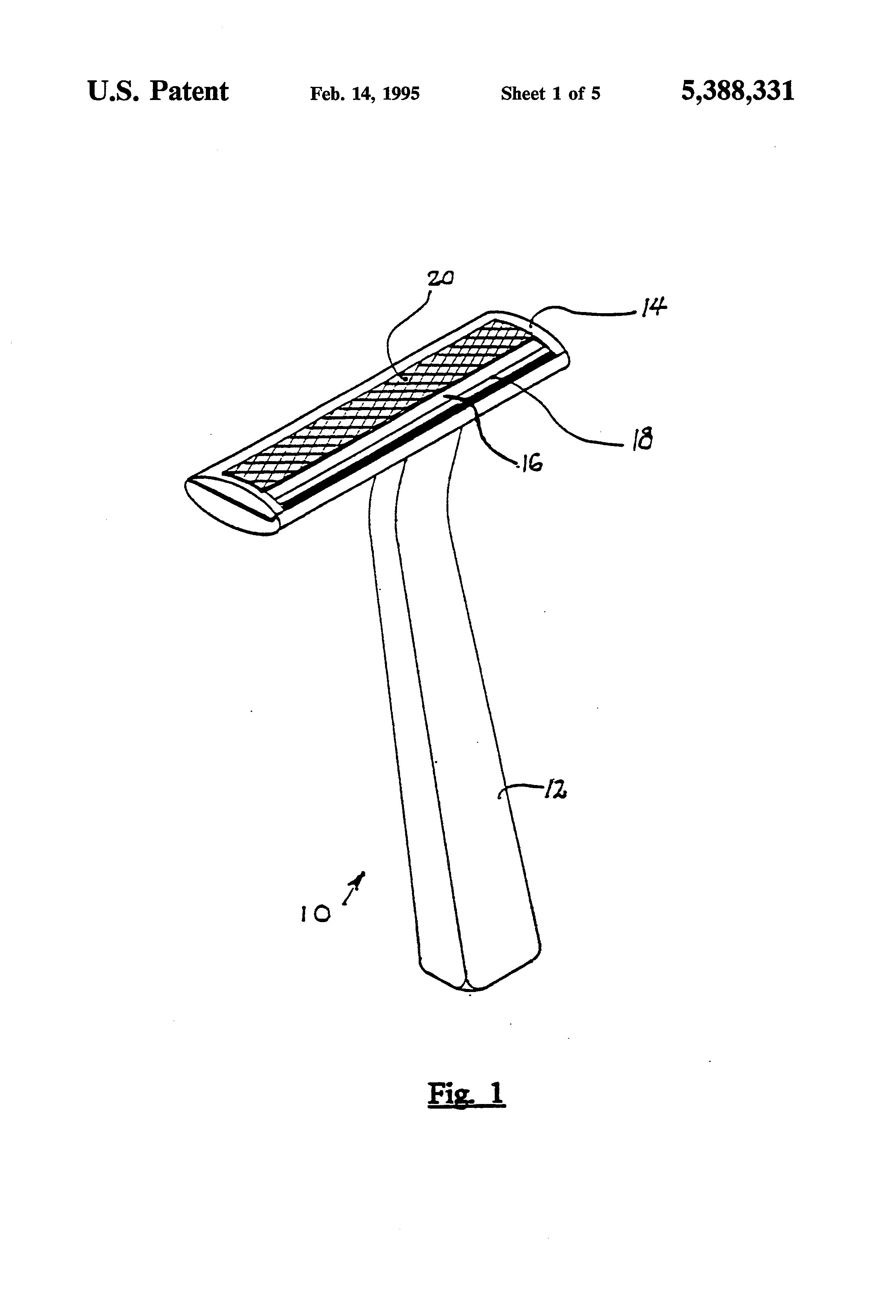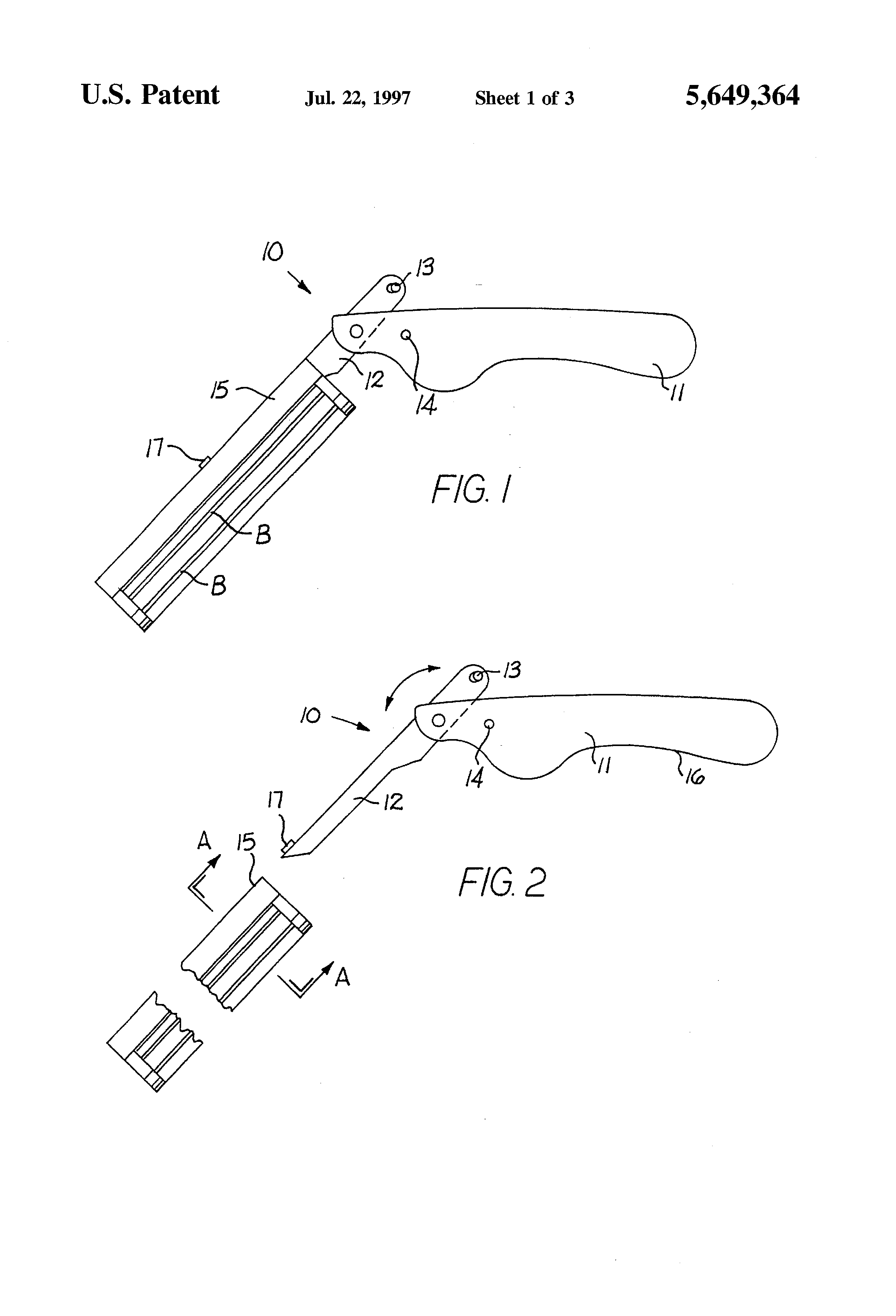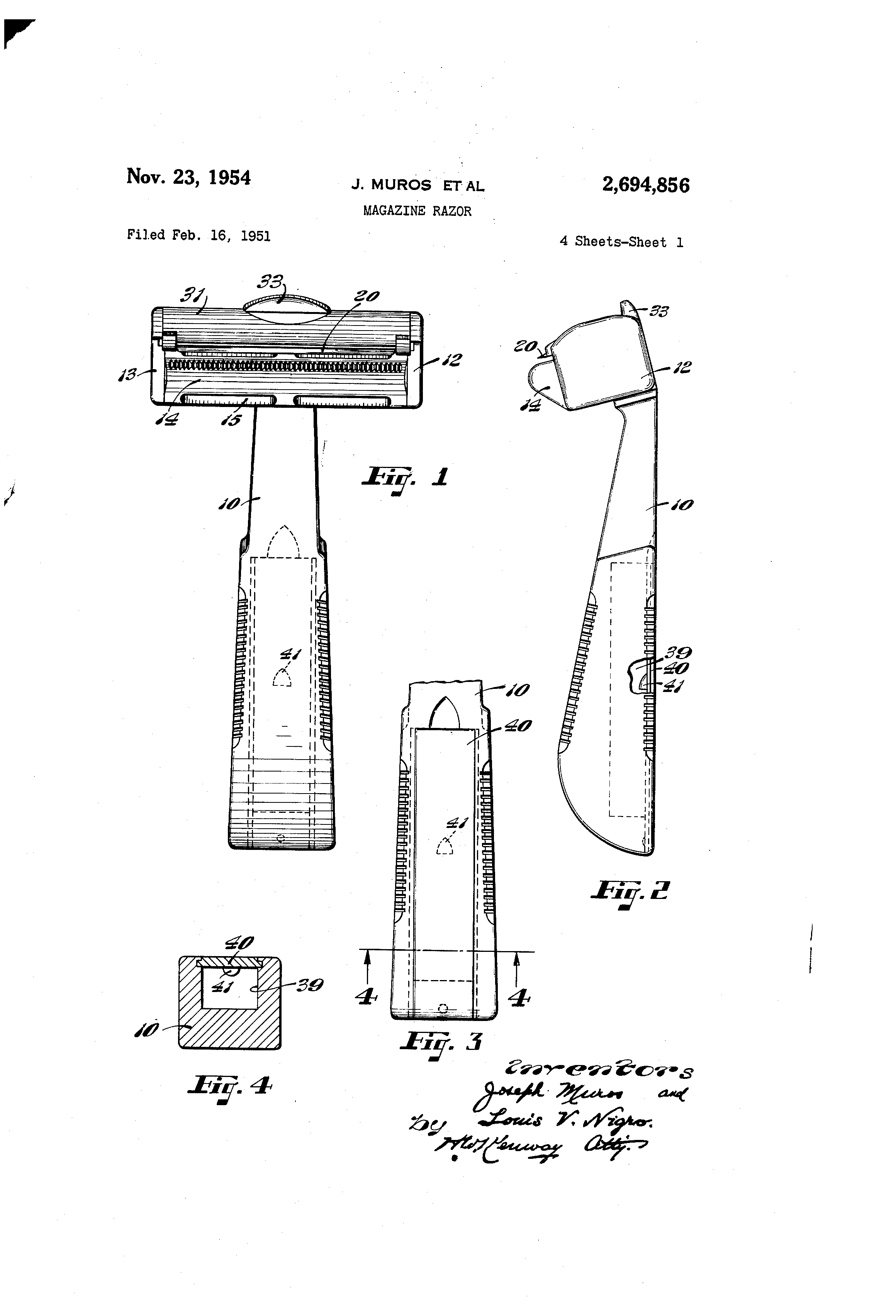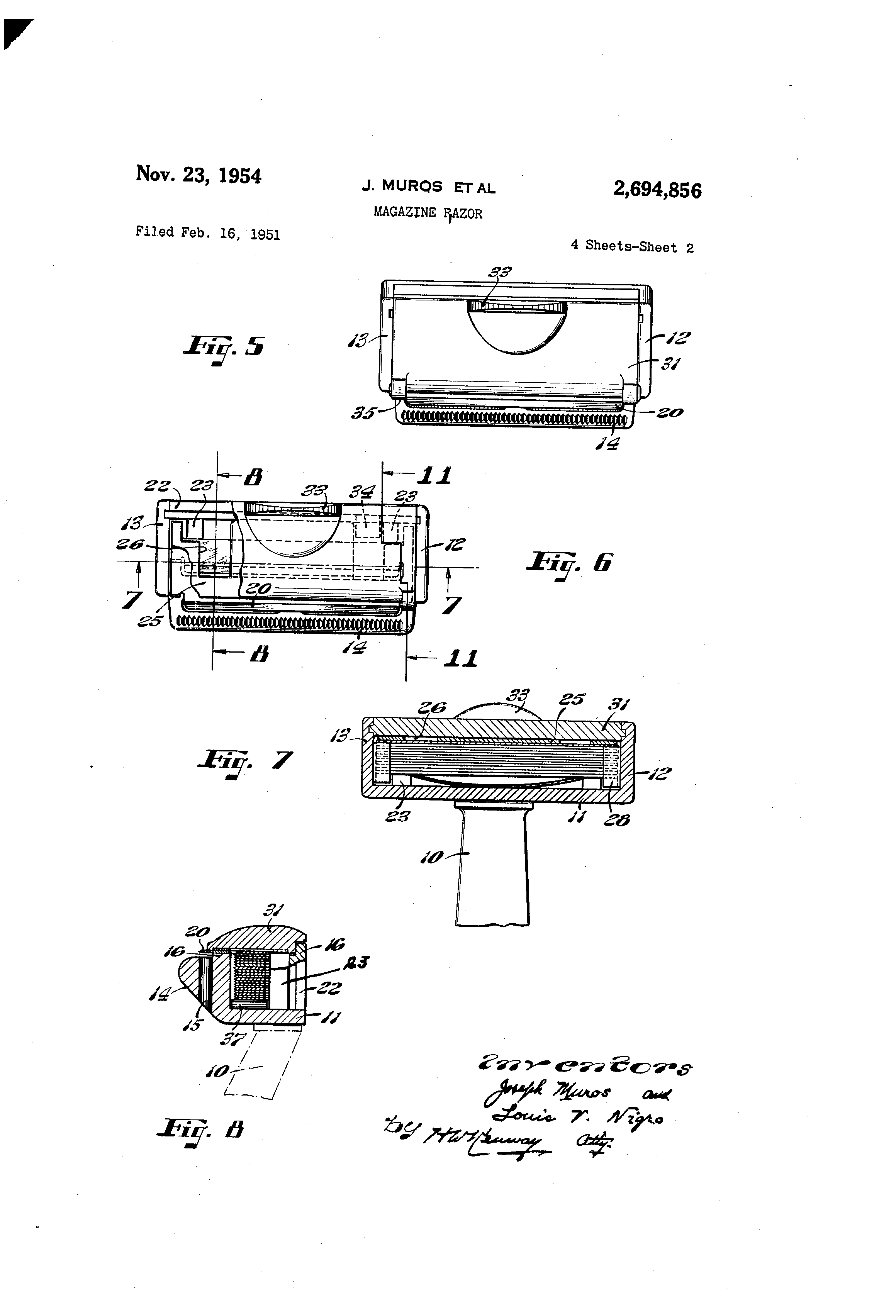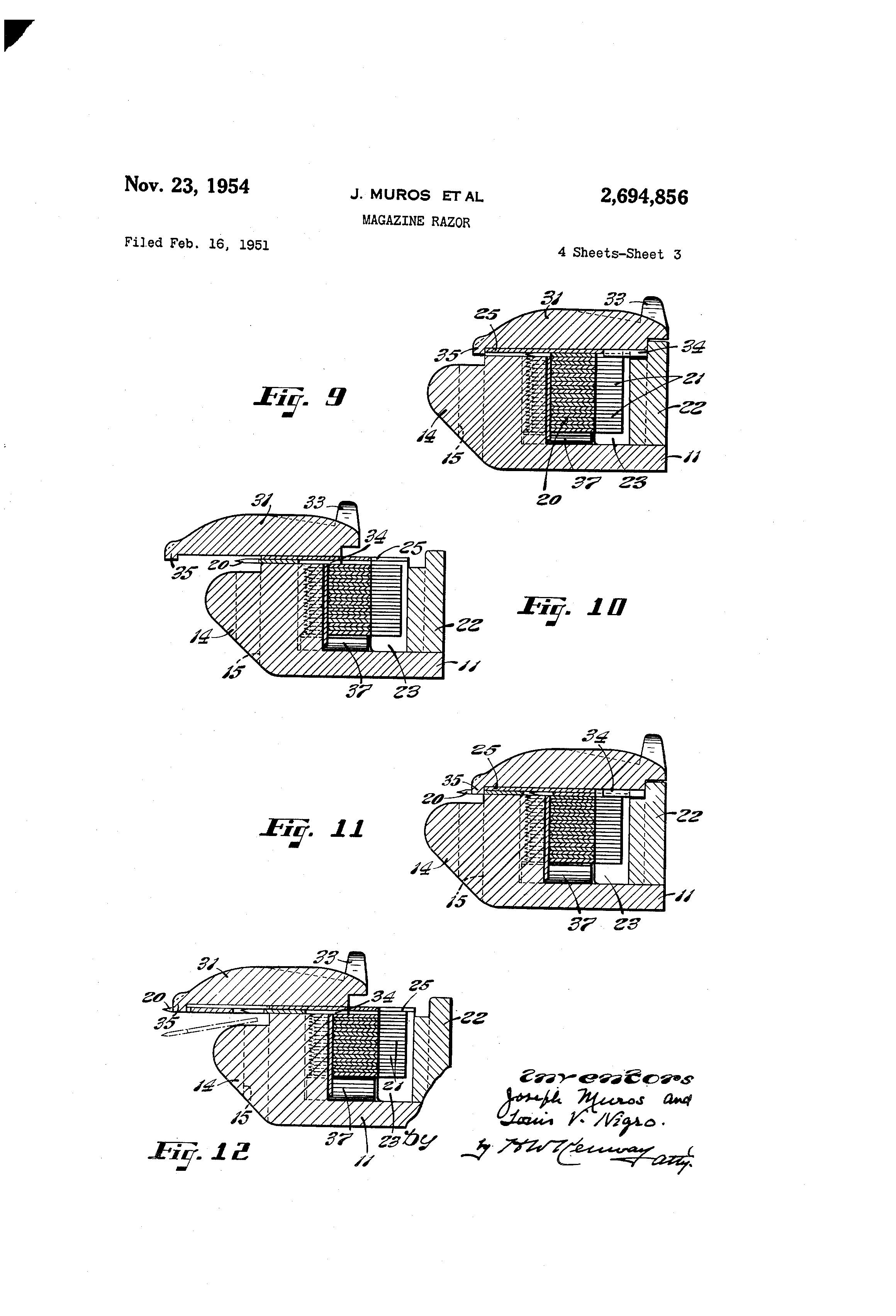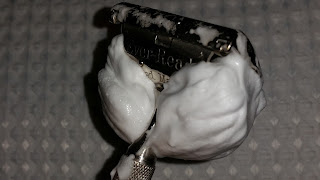A while back I wrote about a disposable sanitary shaving brush made from fibrous material (horsehair or suchlike seems reasonable given the design of the brush) with a patent filed in 1917.
Mr Edward L Corbett decided to go one better a few years later, and filed a patent for a disposable brush made out of paper… in the inventors own words:
… nor will it be possible to subsequently use the brush, even if a barber were inclined so to do.
The actual invention is simple enough according to the patent description:
… a small individual sanitary shaving brush which comprises a plurality of paper strips that are first slotted, or cut, so that a plurality of narrow strips of paper are formed to simulate bristles, the strips of paper being so arranged that the paper like bristles are bunched in brush like form, after which these bristles are placed in a soap solution and dried in an oven about 100° Fahrenheit.
After these paper brushes are so dipped and impregnated with the soap, they may be packed in small sanitary cartons and sold to the trade. To use one of these brushes, it is simply necessary to place the same ‘for a second or two in hot water, or under a hot water faucet, the water dissolving the soap and softening the paper bristles, after which the brush may be rubbed on the face to form a fine lather. ‘There will be enough soap on each brush to `furnish a sufficient lather for the heaviest beard’, and after the brush has been so used, Inasmuch as the brush is made of paper, the water will not only soften the soap, but will soften the paper, so that there will `be no scratching of the face…
It’s hard to imagine a brush made out of paper being as good as a modern brush, but it sure makes it disposable.
Fig, 1 is a view in elevation of two strips of paper pasted together at their one end, and showing a means of slotting the paper to form the paper like bristles.
Fig, 2 is a similar View with the upper edges being turned showing the development of the brush.
Fig. 3 shows the start of the curling of the paper and the still further development of the brush.
Fig. 4 shows a completed brush and a portion of a finger inserted in the same.
Fig. 5 is a similar view, but showing a small wooden handle inserted in the brush.
Fig. 6 is a slightly modified form showing a plurality of strips of paper having their upper edges slotted to form bristles, the paper strips being in their fiat state before being curled and Fig. 7 is a completed brush showing the development of the brush started in Fig; 6.
Like this:
Like Loading...













